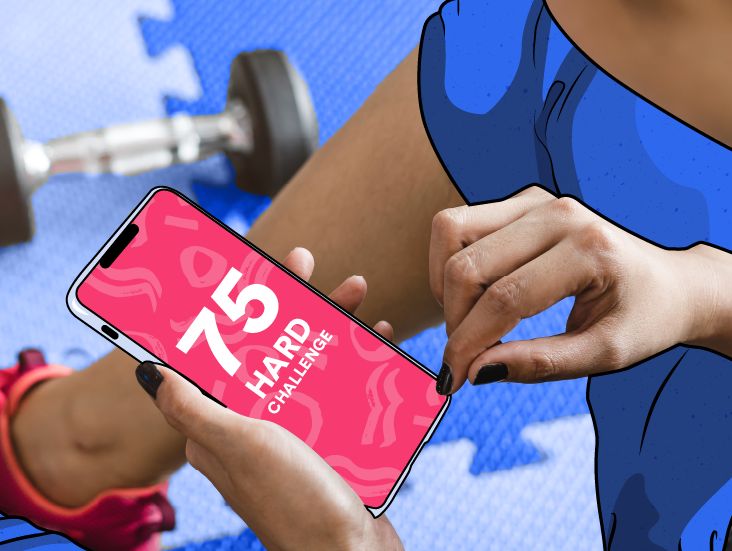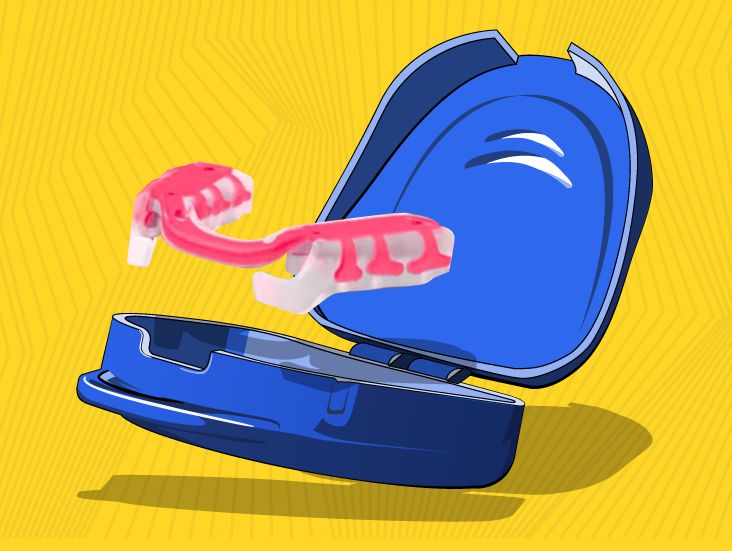Maybe you identify with a veteran athlete who’s finally calling it quits after a storied career. Or maybe you’re just someone looking for a way to scale your workout schedule back.
Whatever the reason, if your relationship with movement is in transition, this crib sheet is for you.
First, validation: Yes, the transition is hard
Let the record show: Whether you’re a former college athlete transitioning into the after-time, or a former bootcamp buff who’s reevaluated their priorities, the metamorphosis from mega-mover to micro-mover is (all-caps) TOUGH!
“This experience of a former competitive athlete [or exerciser] transitioning out of that is one of the hardest things to go through and mentally and emotionally process,” says trauma-informed leadership and life coach Sara Turner, who specializes in helping college athletes transition into post-grad life.
The quick and dirty of it is that this shift usually requires a reconceptualization of self, a shaking up of priorities, and a new social circle, to name just a few.
The identity piece can’t be understated. “Hardcore exercisers and competitive athletes wrap their identity up in the fact that they are a hardcore exerciser or competitive athlete,” says Mia Nikolajev, CSCS.
“It’s human nature to identify with the thing that takes up most of our time and thoughts,” she says.
When you ask one of these people to tell you about themselves, they might start by saying, “Well, I play…” or “I compete in…”, notes Turner.
So, when that activity takes a lesser role in everyday life, it can feel like your whole entire identity is up in the air.
Any potential upside of scaling back your workout intensity depends on WHY you’re making that decision.
“If you’re stepping away because you’re injured, you’ll gain something different than if you’re stepping away because the activity has stopped bringing you joy,” says Nikolajev. Makes sense.
One potential benefit is that “you can stop being burdened by only living under one identity,” she notes. “Being known as just one thing can be really hard whether you know yourself as having other identifiers or not.”
Another upside is that you’ll get a brain breather. When you’re SUPER involved with a sport or activity, it doesn’t just take up your time, it takes up mental space.
“Stepping away gives you a real chance to evaluate if the activity was actually something you enjoyed,” Nikolajev says.
Cue Cam cause you’re gonna make it to the “Otherside.” These tips can help.
1. Figure out your new movement goals
So if the answer *isn’t* to immediately sign up for a marathon or local CrossFit competition, what is it? Turner says sitting down and really noodling on what you want your relationship with exercise to be is a good start.
They recommend asking yourself the following Qs:
- Where am I right now in life?
- What do I enjoy most about movement?
- Why do I want to continue moving?
- What kind of movements have I enjoyed in the past?
- What is something new I’ve been wanting to try?
- How do I want to feel in my body?
- What is the bare minimum that I want my body to be able to do (like hiking with friends)?
- Did I actually enjoy movement in the first place?
2. Ease off the gas instead of slamming on the brake
Be thoughtful about your approach. Even if you’ve been going hard with most of your eggs in one basket, changing things up too abruptly can cause some of your eggs to break.
“Rather than immediately replacing the eggs in the basket with new ones, you want to get a few mini baskets,” says Nikolajev.
In other words, don’t toss yourself hard and head-first into new activity.
3. Expand your support system
Retiring from athletics or leaving a physical activity group is commonly accompanied by a loss of community.
“Professional athletes, for example, will commonly tell you that the thing they miss the most upon retiring are the bus rides,” says biomechanics, body performance and injury expert, Dr. Rami Hashishi, Founder of the National Biomechanics Institute and the Chief Technological Officer of pareIT.
Likewise, seven-times-a-week yogis talk about the locker room chats with the other Bendy Brendas. And CrossFitters often talk about their WOD-mates.
“Considering the association between friendship and community with mental and physical health, losing such a support system may prove debilitating,” he says. “Thus, to aid in their transition, to optimize mental and physical health, it is imperative these exercisers develop a proper support system.”
4. Reevaluate your social feeds
If you were a barre buff, odds are you clicked “follow” on a zillion barre instructors. And if you were a soccer star, your probs follow every current and former USWNT on the ‘gram.
“When you decide to step away from your sport, or it’s taken from you for whatever reason, it could be really helpful to mute [or unfollow] some athletes and trainers and fitness professionals,” says Turner. “You may find yourself comparing yourself to those people, which can quickly lead to shame or feelings of hopelessness and loss.”
Plus, “consistently being exposed to athletes — whether that’s their lifestyle, or training habits — may cause you to focus too much on your past and cloud what should be your primary focus: your present and your future,” adds Hashishi.
Turner’s recommendation: Notice your thoughts as you scroll past the athletes and fitness professionals and gurus you’ve been following. “Are you experiencing negative self-talk? Are you comparing yourself to them? Are you feeling negative feelings in your body? That may be a signal to mute or unfollow those people.”
Remember: It doesn’t have to be forever
The experts stress that this change doesn’t need to be a permanent one.
One option: Replace these accounts with experts who speak to your process. “If you want to figure out a healthy relationship with food, there’s an account for that,” says Turner. “If you want to explore identity outside of your sport, there’s an account for that (The Virago Project is a good one for this). If you want to follow athletes who are also mental health advocates, there are athletes you can follow.”
5. Hit up the pros
Consider reaching out to a life coach, sports psychologist, or therapist to talk through your process.
“Having a third party to talk to can be really cathartic and helpful, and for some, necessary,” says Turner. “Especially for the people who are experiencing symptoms of grief (denial, bargaining, anger, depression) around the loss of identity. Really, whatever the former competitive athlete is experiencing may be new or scary or confusing, and having someone to support them can be extremely helpful.”
The right training professional can help you figure out what you want the next phase of your active life to look like, and create a game plan to make that happen.
6. Be patient with yourself
“The learning curve here is steep,” says Hashishi. “So if you feel like it’s taking you a minute to adjust to this new, more casual approach to movement, know that that is completely normal!”
If you’re entering a season of workout life change, it’s perfectly normal — but it’s also normal to find it difficult.
Especially for those who are leaving professional sports, amateur sports, or any kind of organized athletics, the transition from an active identity to a not-as-active one takes patience.
Take time to set fresh movement goals, reframe your support group, and evaluate your other needs to make your transition a complete and successful one.
Gabrielle Kassel (she/her) is a queer sex educator and wellness journalist who is committed to helping people feel the best they can in their bodies. In addition to Healthline, her work has appeared in publications such as Shape, Cosmopolitan, Well+Good, Health, Self, Women’s Health, Greatist, and more! In her free time, Gabrielle can be found coaching CrossFit, reviewing pleasure products, hiking with her border collie, or recording episodes of the podcast she co-hosts called Bad In Bed. Follow her on Instagram @Gabriellekassel.






